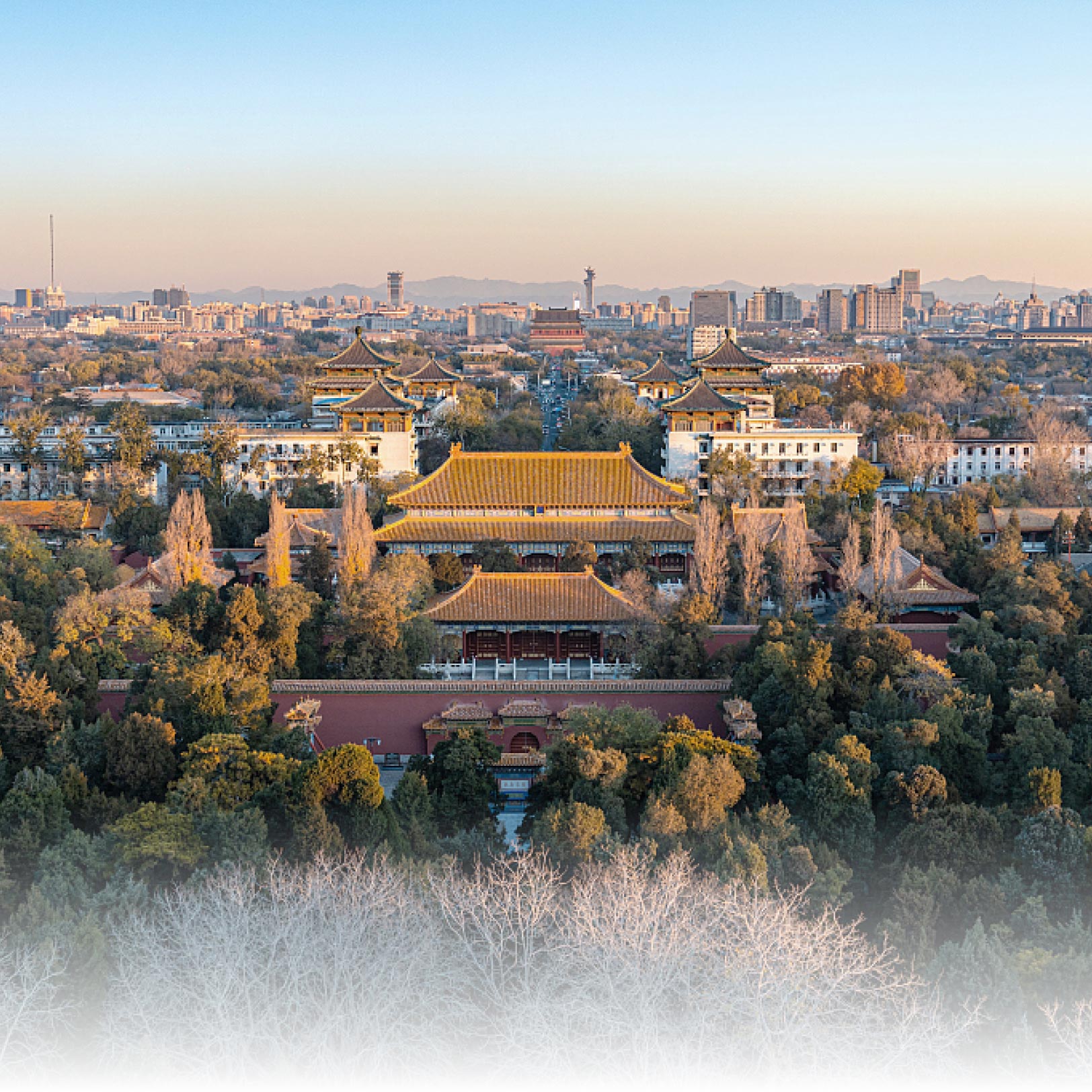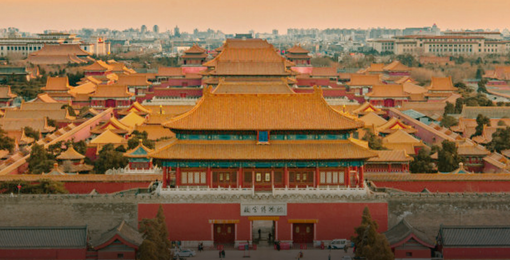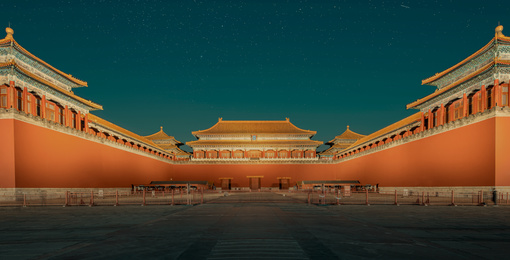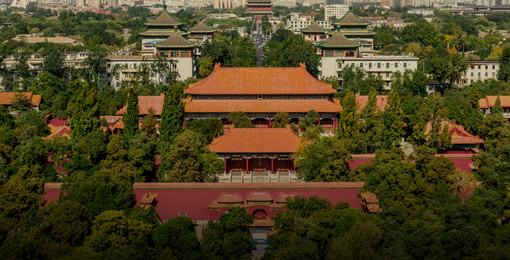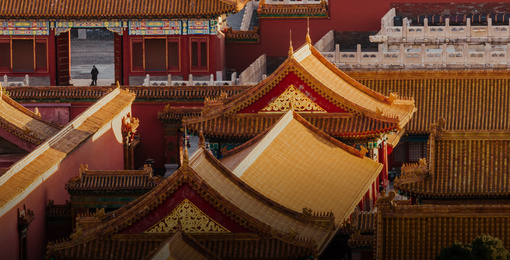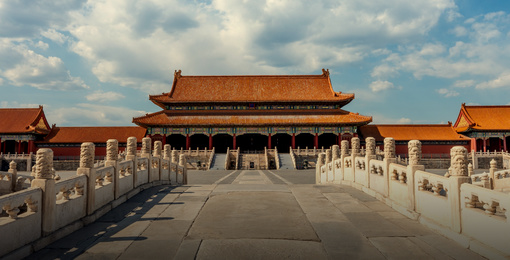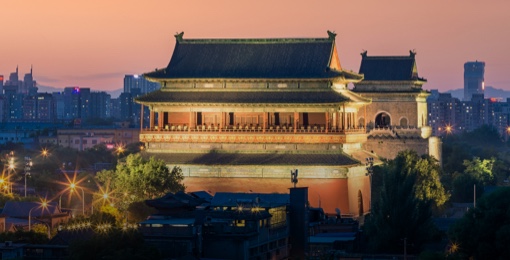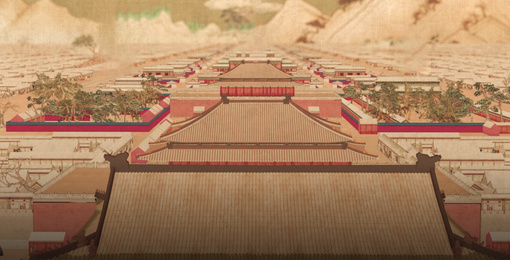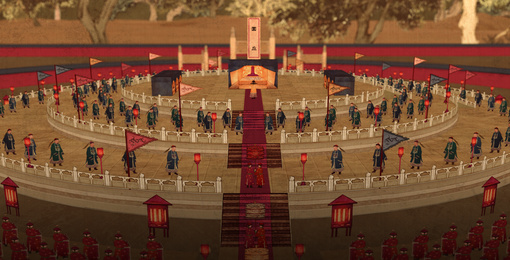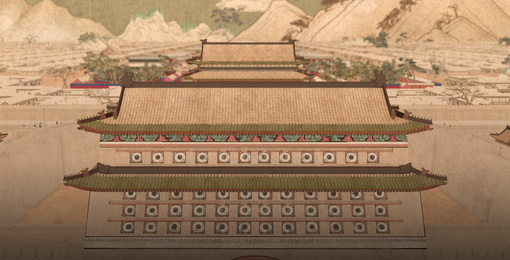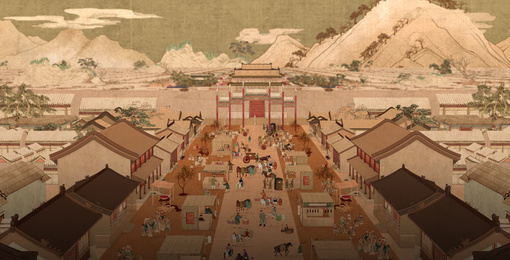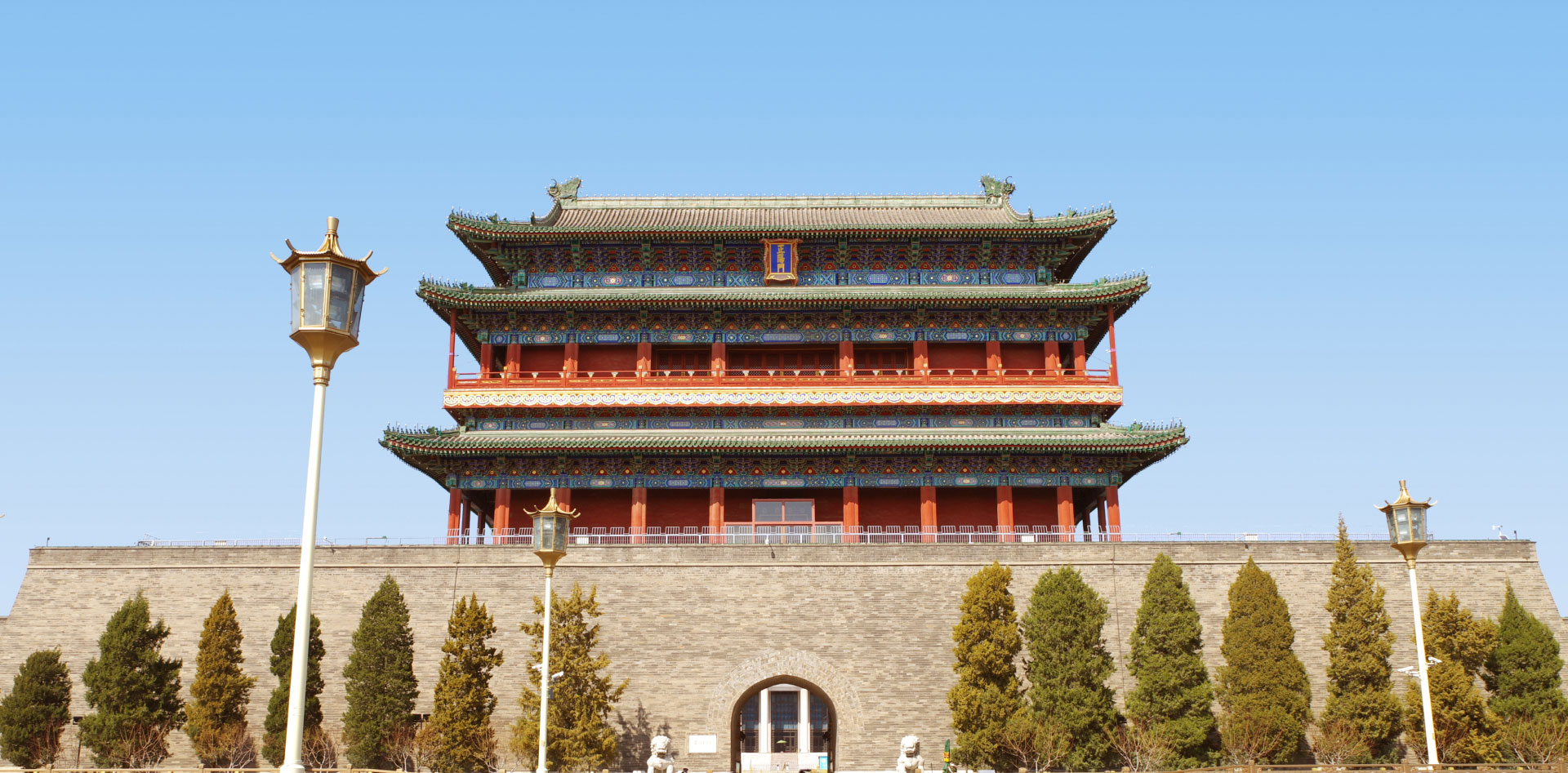The Zhengyangmen Gate comprises two tall buildings oriented south-north at the southern end of Tian'anmen Square, with the gate tower in the north and the archery tower in the south.
The Zhengyangmen Gate was a city gate complex for defensive purposes and with urban management functions during the Ming and Qing dynasties. As the central south gate of the inner city of Beijing in the Ming and Qing dynasties, the Zhengyangmen Gate is the largest and highest-ranked city gate among the gates of inner and outer cities, and has witnessed the traditional way of urban management in ancient China. It is one of the key viewpoints to enjoy a distant view of the Tian'anmen Square Complex and an important part of the landscape in the southern section of Beijing Central Axis.





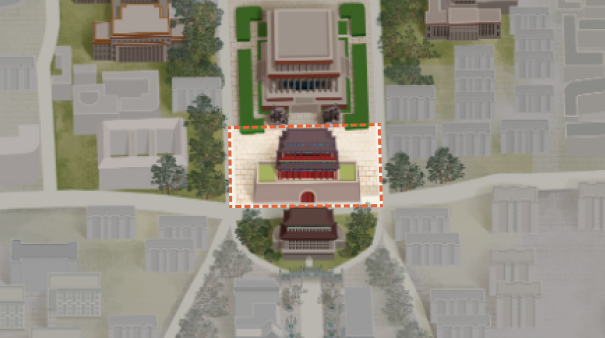
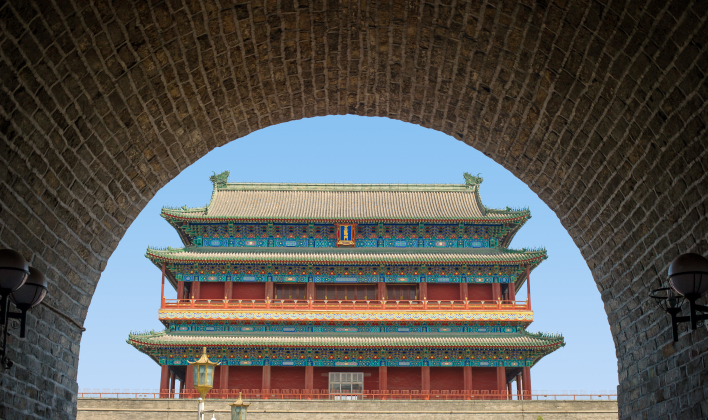
The Zhengyangmen Gate as the central south gate of the inner city during the Ming and Qing dynasties, it is ranked higher in design and size than other city gates. As the iconic landmark of Beijing's framework of the walled-city, Zhengyangmen Gate Tower and Archery Tower are the conspicuous buildings in the Qianmen Area. On the Zhengyangmen Gate Tower, the Tian'anmen Gate and Tian'anmen Square can be viewed in the distance to the north, while the Yongdingmen Gate is visible in the distance to the south from the Archery Tower.
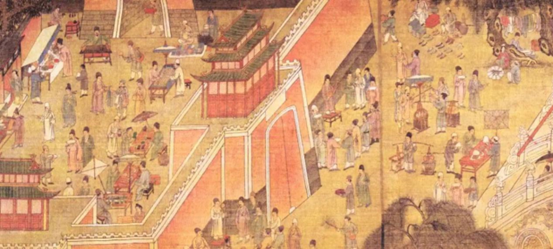
As the central south gate of Beijing's inner city, the Zhengyangmen Gate had the combined functions of military defense, urban management, and ceremonial traditions. The Imperial Road beneath the Gate was preserved for the emperor when he left the city for activities such as the sacrificial ceremonies in the southern suburbs and the hunting tours to the Nanyuan (Southern Imperial Garden). On other days, the Archery Tower was kept closed, with local residents using the side gates under the blockhouses to the west and the east. With curfew imposed during the Ming and Qing dynasties, as a means of urban management, the Zhengyangmen Gate was opened and closed when the Bell and Drum Towers sounded the time to control the flow of citizens. The renovations of the Zhengyangmen Gate in the early 20th century witnessed the process of public transformation of Beijing Central Axis. Today, the Zhengyangmen Gate Tower and Archery Tower are open to the public as museums.
The Zhengyangmen Gate was first built in 1419, initially only a gate structure. The gate tower, the wengcheng barbican, the archery tower, and the west and east blockhouses were added between 1436 and 1439. Simultaneously, the Zhengyangmen Bridge and the archway were built south of the Zhengyangmen Archery Tower. In the Ming and Qing dynasties, the Zhengyangmen Gate was repeatedly damaged and reconstructed. With the completion of the Zhengyangmen West Station on the Beijing-Hankou Railway and the Zhengyangmen East Station on the Beijing-Shenyang Railway, the Zhengyangmen Gate area became Beijing's transportation hub, and the traffic flow in the surrounding areas increased dramatically. From 1914 to 1915, the Beijing Municipal Administration Office re-planned the Zhengyangmen Gate area to relieve traffic congestion. This city renovation project reflected a process of increasing public access to Beijing Central Axis. In 1990 and 1991 respectively, the Zhengyangmen Archery Tower and the Gate Tower were opened as museums.
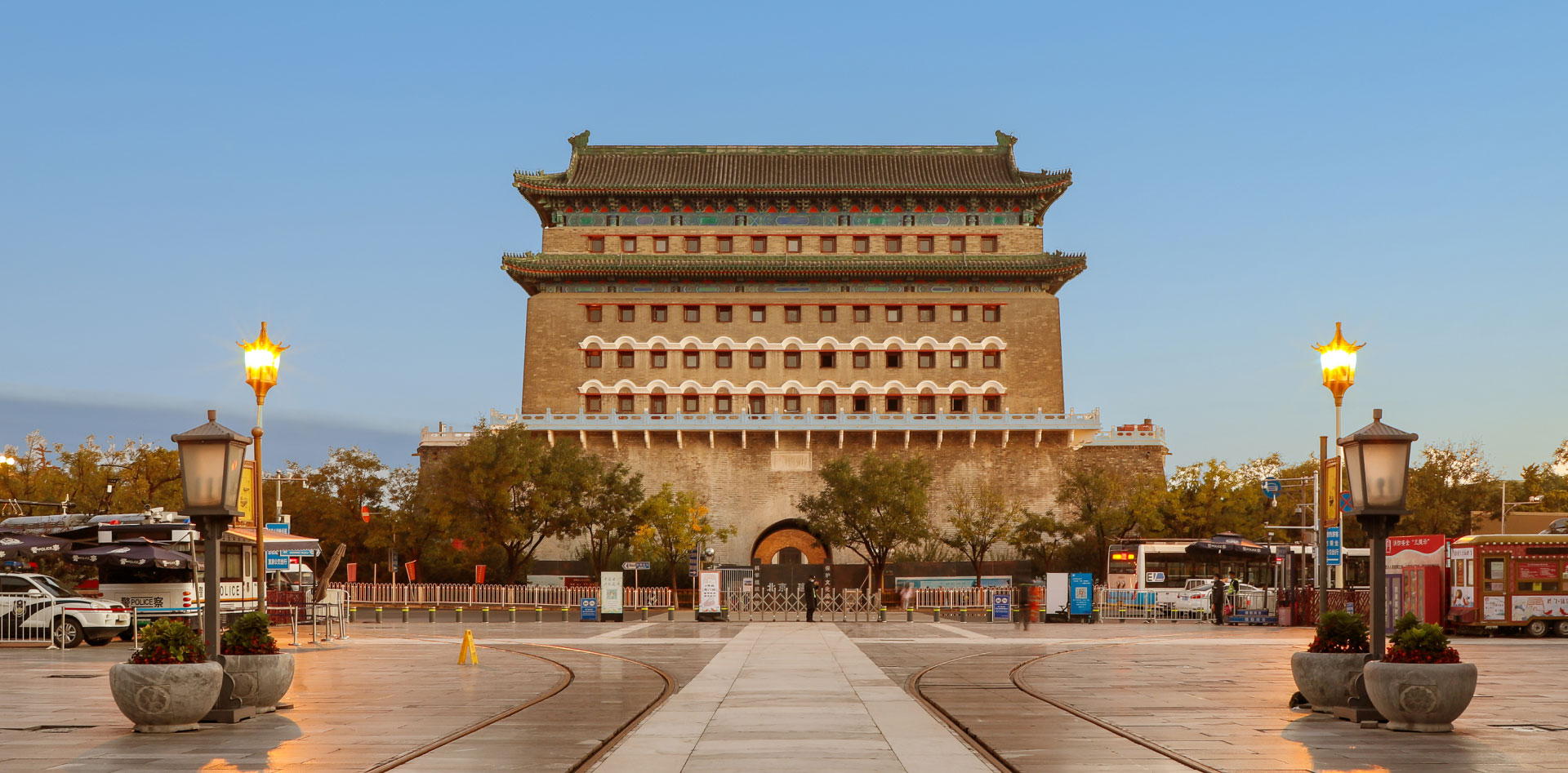
The archery tower of Zhengyangmen Gate is a ceremonial and defensive building in the Ming and Qing dynasties.
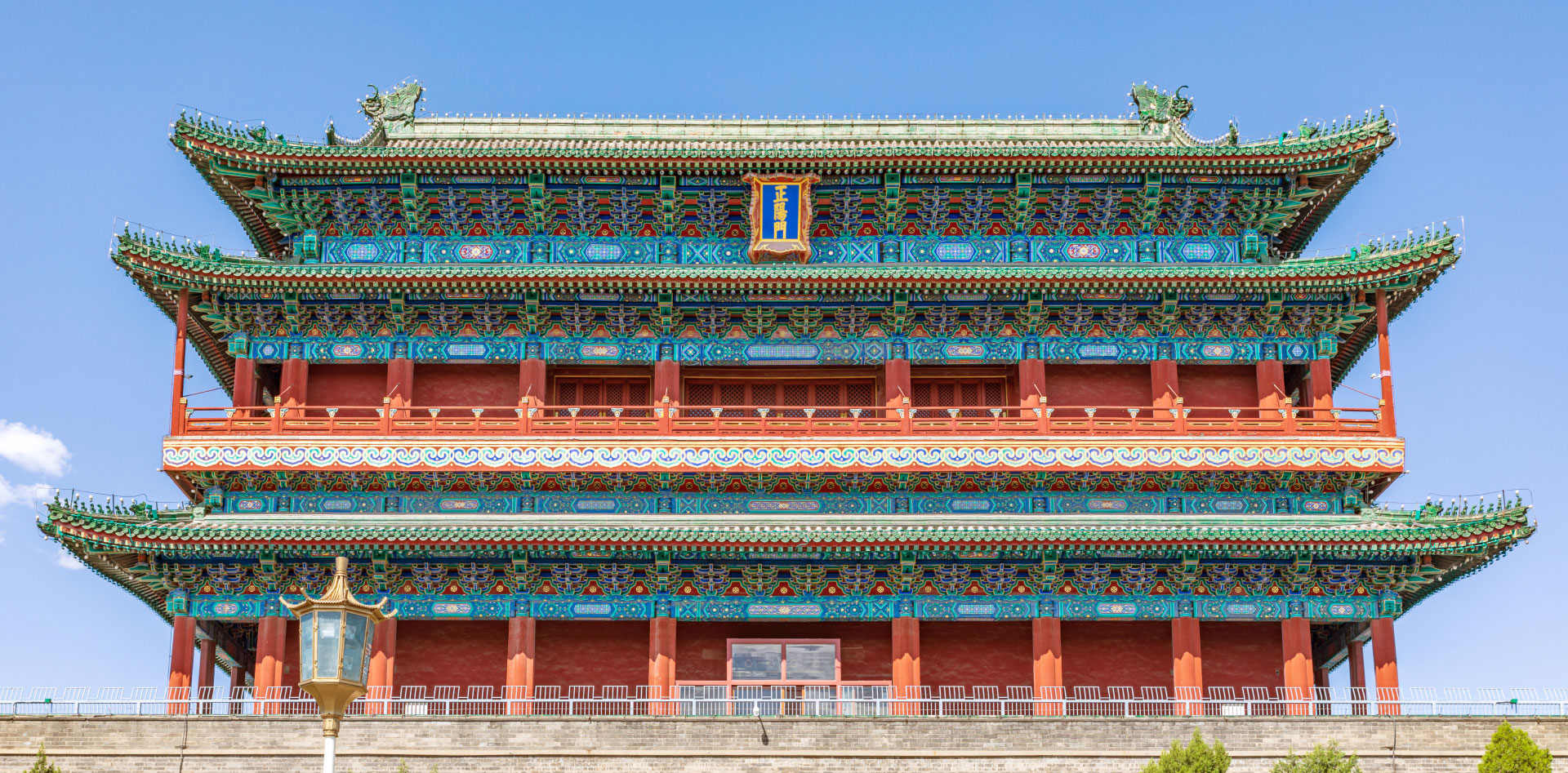
Zhengyangmen Gate is the southern gate of the inner city of Beijing in the Ming and Qing dynasties.






